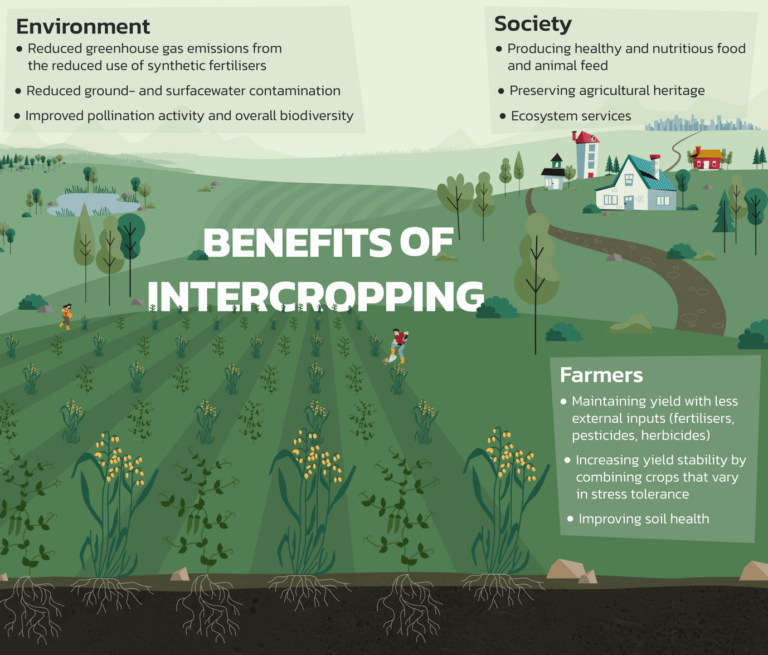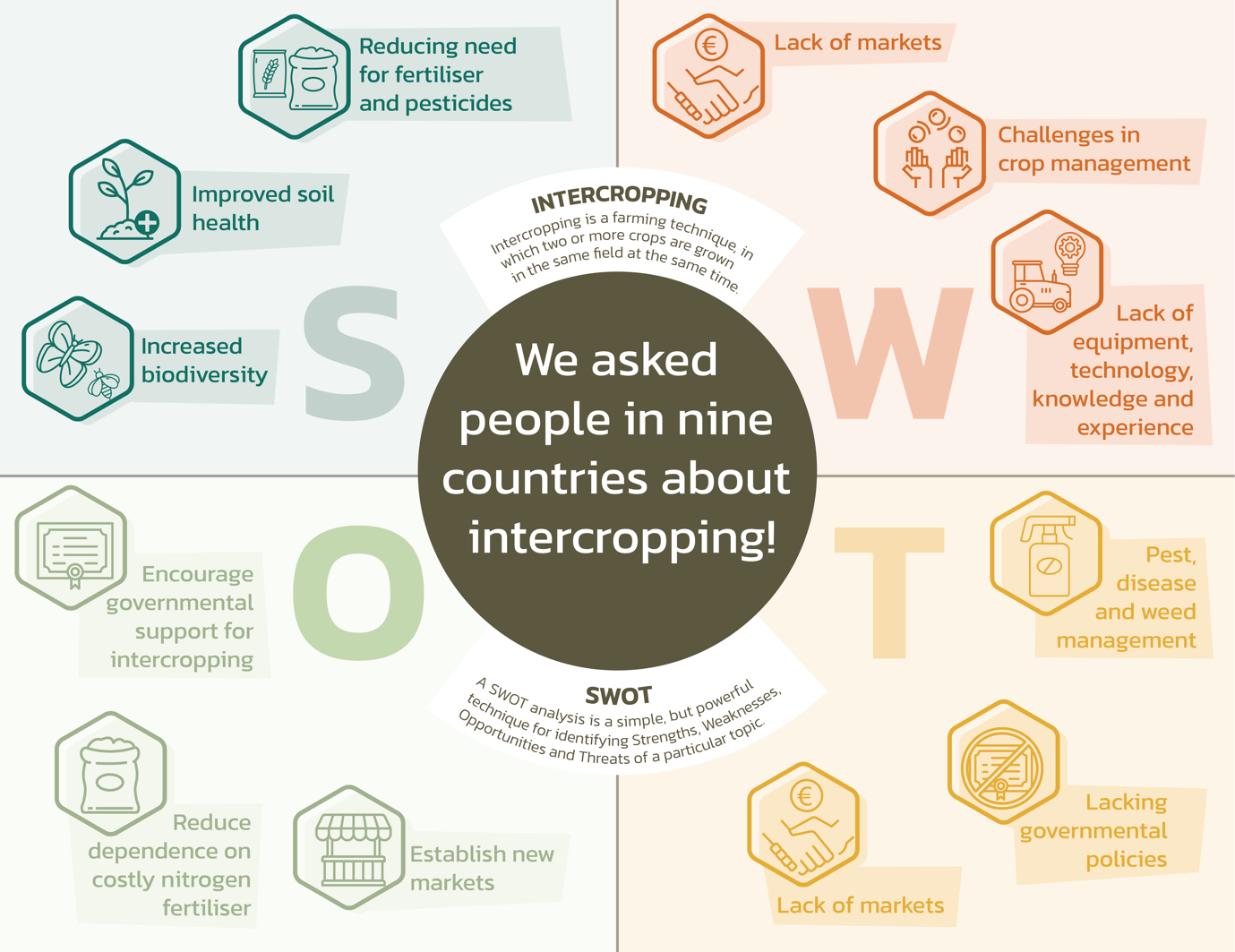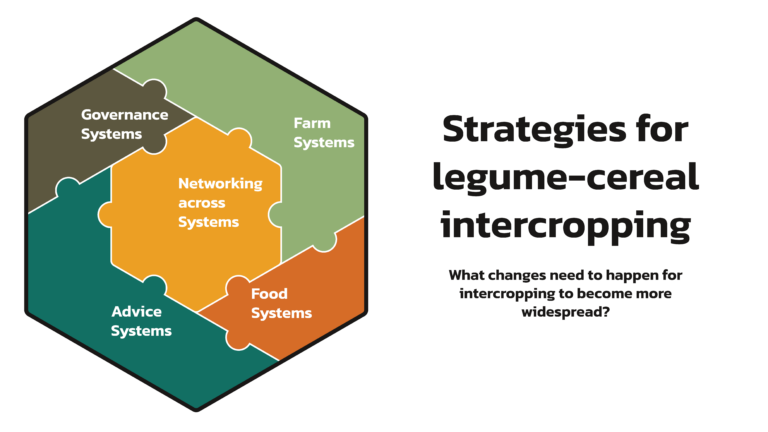Legume-cereal intercropping for a sustainable agriculture

With crops, two is better than one
Legume-cereal intercropping as a new frontier in sustainable agriculture
Farmers are under increasing pressure to balance sustainability with economic viability. Innovative and sustainable agriculture methods are urgently needed. Enter intercropping, a practice that challenges the monoculture status quo and offers a plethora of benefits. Yet, many challenges need to be overcome for its widespread adoption.
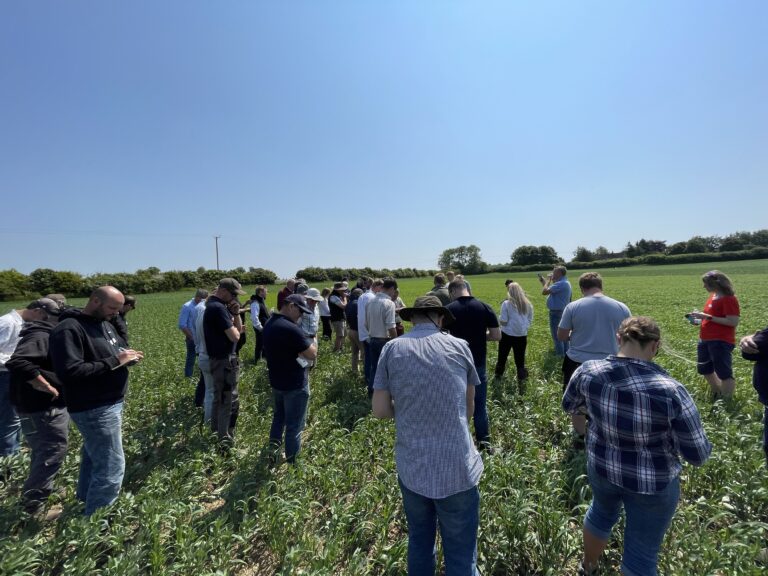
What is intercropping?
Intercropping is a sustainable farming practice, in which two or more crops are grown in the same field at the same time.
Sowing the seeds of change:
The benefits of legume-cereal intercropping for sustainable agriculture
Looking at the European agricultural landscape today, monocultures dominate the fields. Growing multiple crops, such as legumes and cereals, in the same field at the same time, is rarely done. However, this intercropping technique offers a myriad of benefits that can lead to a more resilient and sustainable agricultural future:
- Enhances soil health and biodiversity
- Improves water and nutrient use efficiency
- Reduces reliance on synthetic inputs
- Improves resilience to pests and diseases
- Diversifies income streams and enhances yield stability
- offering farmers a greater financial stability in an uncertain world
Thus, intercropping offers both environmental and economic benefits, underscoring its transformative potential for European agriculture.
If intercropping offers such significant benefits, why isn't it widely practised?
Despite its evident advantages, intercropping remains a niche practice in European agriculture.
In the field:
Insights from our extensive farmer survey and stakeholder workshops
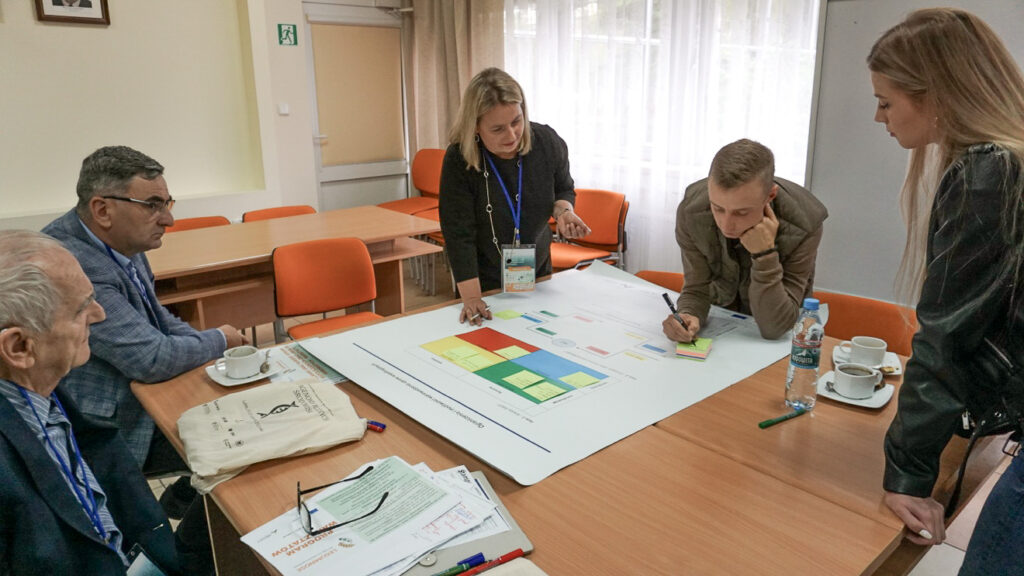
Surveying over 2,000 European farmers in seven European countries, as well as in Pakistan and Egypt, our research team explored why intercropping isn’t more widespread. Delving even deeper, we held workshops with various stakeholders including farmers and farming advisors, supply chain representatives, policymakers, and researchers. Their collective wisdom provided valuable insights into the complexities surrounding intercropping.
What did our research reveal about the key barriers preventing the widespread adoption of intercropping?
Unearthing the barriers: Investigating challenges to intercropping adoption
Despite its promising potential, the path towards widespread adoption of intercropping is fraught with obstacles. The key challenges and barriers to adoption we identified are:
- Inadequate markets for intercropped products
- Lack of awareness and knowledge among farmers
- Limited access to technical support and resources
- Logistical challenges in seed selection and crop management
Understanding these barriers is essential for devising effective strategies to overcome them and unlock the full potential of legume-cereal intercropping. Given these challenges, how can we propel intercropping into the mainstream?
Nurturing hope: Strategies for legume-cereal intercropping adoption
In response to these challenges, we have devised several strategies to support the adoption of legume-cereal intercropping:
- Providing targeted education and training programs for farmers
- Developing agronomic practices and seed varieties specifically bred for intercropping
- Creating supportive policies and incentives to encourage intercropping adoption
- Establishing farmer-led advice systems and fostering networking to empower farmers
By implementing supportive policies, incentives, and educational programs, we can sow the seeds of a more resilient and sustainable agricultural future.
A future, where monocultures give way to diverse and thriving ecosystems, ensuring a greener tomorrow for generations to come.
